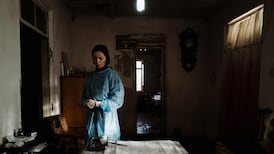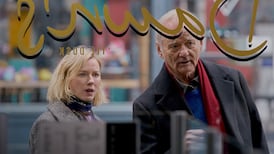There's a whole lot of staring going on in Werner Herzog's magnificent reworking of FW Murnau's 1922 classic Nosferatu, eine Symphonie des Grauens, the once "lost" text Herzog believes is the greatest artwork to ever emerge from Germany. As with the earlier vampire picture, Nosferatu the Vampyre retains some of Murnau's copyright-dodging tics: Mina, for example, is now called Lucy, the name of the heroine's friend in Bram Stoker's novel Dracula.
Oddly, for all its Expressionist homage and angular motifs (dig that fabulously discombobulating score from Florian Fricke's Popol Vuh), Herzog's filmed tribute to a slanted film adaptation remains the most compelling, faithful-in-spirit reworking of Stoker's antihero. The 1979 project's fidelity, arguably, stems from being as mad as a bag of hammers. (Who is that kid with the violin, anyway?)
One would imagine that Nosferatu had already exceeded its bug-eyed crazy quota when Isabelle Adjani was cast as the wife of hapless Jonathan Parker (Bruno Ganz). But oh, no. In addition to Ms Adjani's panting and sleepwalking, we get Klaus Kinski's scary, forlorn Count. Cinematographer Jörg Schmidt-Reitwein often swathes Herzog's muse and Best Fiend in blackness, leaving only his Max Shrek-alike monstrous pallor and sharpened teeth glinting from the shadows.
This is Dracula at his most existential: “Can you imagine enduring centuries and experiencing the same futility each day?” he asks in a pained voice. Parker, an increasingly squirming, desperate presence, is terrified to find his host in a coffin, though he’s equally discomforted by Kinski’s hurt, human-beneath-it-all expression and menacing stomp.
Dracula’s loneliness is, in turn, echoed and reinforced as Ganz wanders through the drafty, whistling corridors of his Transylvanian stopover. Supernatural and sixth-sense connections fade in and out, adding to the sensation that we’re experiencing a fever-dream.










